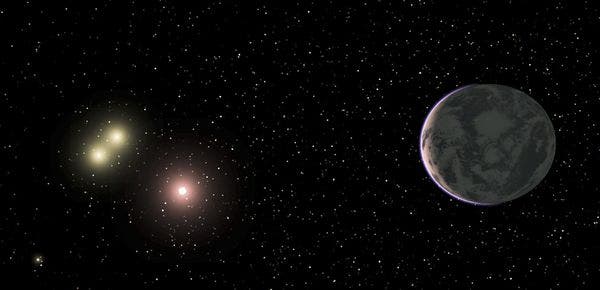The hunt for finding another Earth is making progress every day, as scientists are constantly adding new viable candidates to the list. It’s estimated that in our galaxy alone, the Milky Way, there are between 200 and 400 billion stars – out of all of these, from a statistical point of view, the chances of finding another Earth-like planet, capable of supporting life, are very much realistic. While the technology and resources diverted to this cause are extremely limited, the output so far has been phenomenal, and if anything, the results turned in so far will help scientists determine whether the conditions which lead life to blossom on Earth are of extreme rarity, if not unique. Again, if you look at the sheer number of stars in the known Universe, millions of billions, the thought that Earth is the sole home to life seems foolish.

The latest exciting candidate is a super-Earth called GJ 667Cc, a planet of at least 4.5 Earth masses, orbiting a dim red-dwarf star in the habitable zone – the region where liquid water can stably exist. The planet completes a full revolution around its sun in 28 days, but even though it receives slightly less light from its star than Earth does from the sun, the light emitted by the red dwarf is infrared, so the planet should absorb more of its incoming energy than Earth does from sunlight.
It’s believed that it has a rocky surface, a fact of high likelyhood as planets within 10 times the mass of Earth have been found to be, a critical prerequisite for supporting life. If it also has an atmosphere, than it might offer the necessary conditions for liquid water to form, and thus life. Also, because of the infrared light, the whole planet is likely covered in a redish hue, coupled with a binary system with close, visible proximity, makes GJ 667Cc sound like a faboulos sight.
“If it has an atmosphere, it’s probably reddish all the time, because the star is really red,” said co-discoverer Guillem Anglada-Escudé, who conducted the work while at the Carnegie Institution for Science in Washington, D.C.. “It would be like being evening all the time.”
Other candidates aroused great excitement in the past, like the infamous Gliese 581g, only to fade out in a murmur of disappointment, as researchers discovered its chances of supporting life are practically nil after further studying. As such, the scientists that discovered GJ 667Cc advice caution, since not enough critical data that would help them determine for the very start if it’s just another space rock is currently available. For such data to be available, transit observation is required, such as the measurements relating to the dimming of the host star’s light as the planet passes in front of the star, as seen from Earth or by a powerful space telescope, such as Kepler. If such an observation would be possible, then scientists could determine the Earth-like candidate’s density, and from there on get an idea of its composition, which at its own term can help determine what kind of atmosphere, if any, the planet might foster. Why don’t we do it , then? With our current view of the red dwarf, a transit of GJ 667Cc has about a one-percent chance of happening, says Anglada-Escudé.
Check out this previous piece we’ve covered on ZME Science, if you want to learn more about how scientists find new planets and how they can semi-accurately determine if a planet is Earth-like or not.
An international team of scientists pulled the newly announced planet from data gathered by the High Accuracy Radial Velocity Precision Searcher, or HARPS, a Swiss-led project that monitors stars for the gentle gravitational tugs produced by orbiting planets. By developing a new method for processing HARPS data, the team of astro-scientists managed to discover GJ 667Cc.
It’s possible that we’ll never know for sure if GJ 667Cc is a really a safe heaven for life, but if anything, the discovery proves that interesting prospects for Earth-like planets are abundant, and research is set on the right path.
“The truth is, we may never know,” said astrophysicist Sara Seager of the Massachusetts Institute of Technology. It’s difficult to determine habitability without knowing the planet’s composition, or anything about its atmosphere and how much of the star’s energy is absorbed. “But overall I’m excited,” she says. “Whatever is going on, this is the start of the next era in exoplanets. We’re going to start seeing super-Earths in habitable zones all the time.”
The astronomers’ discovery was described in a recently published paper in the journal Astrophysical Journal Letters.
Was this helpful?



